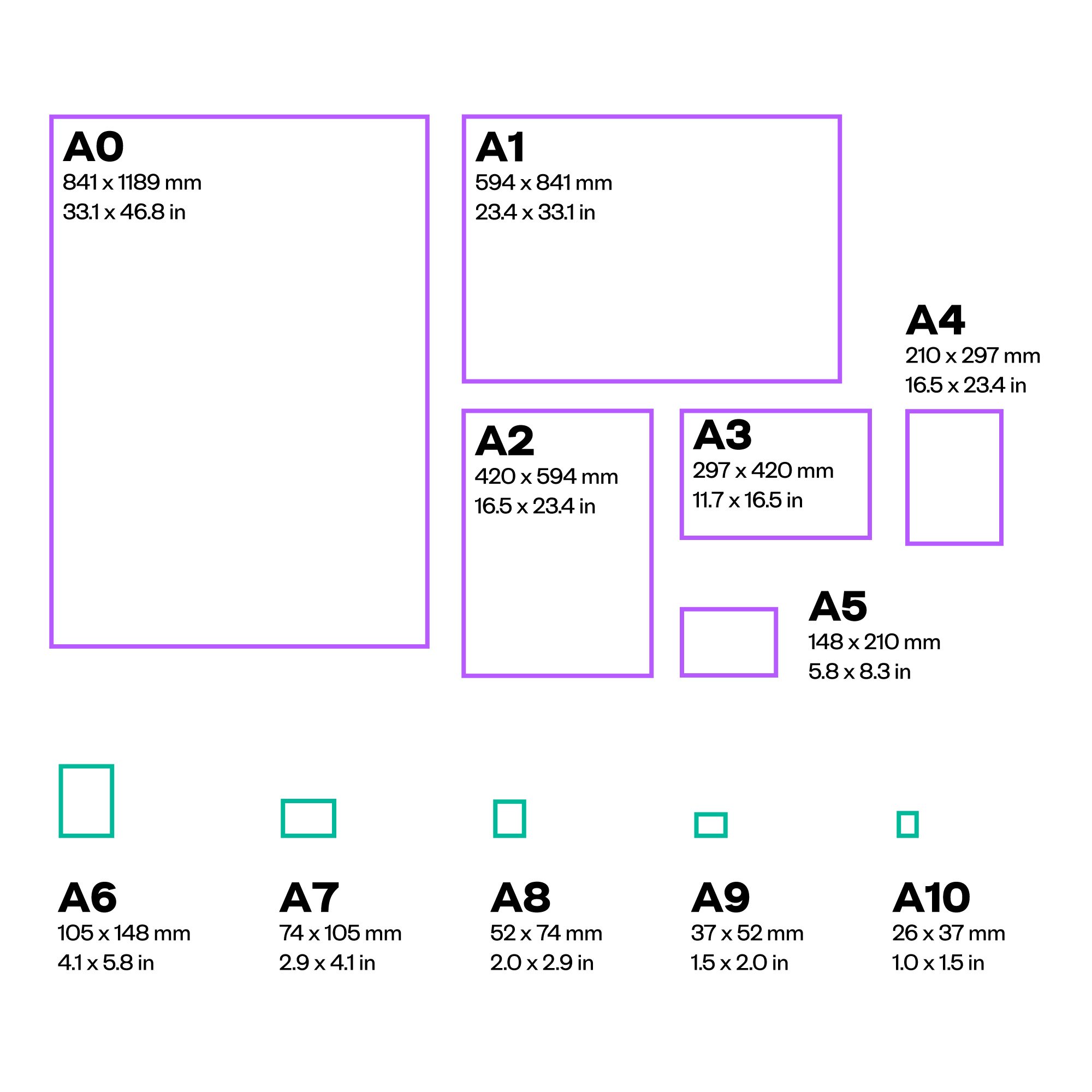Table of Contents
A1 paper size and dimensions: everything you need to know
In this article we’ll reveal the size of A1 paper in centimetres, inches and pixels, before looking together at its most common uses and discovering a few tricks for getting the best out of A1 paper when printing.
A1 paper is the first paper size derived from A0 (link) and is exactly half its size. A1 is used in architecture and graphic design, and has precise dimensions that are worth knowing if you want to get the most out of it.
You’ll find all the information you need to know about A1 paper, including its size in centimetres, inches and pixels, below. After that, we’ll look together at the most common uses for sheets of A1 paper.
Let’s get started!

A1 paper: dimensions and weight
Like all the other sizes in the A series, sheets of A1 paper are regulated by the ISO 216 standard, set by the International Organisation for Standardisation (abbreviated to ISO). The ISO 216 sizes apply in Europe and in many other countries, but not in the USA and Canada, where, for example, the ‘Letter’ size is more common.

The dimensions of A1 paper are 39.4 x 84.1 cm, or 23 x 33 inches. The number of pixels depends on the resolution, which is equal to the number of pixels per inch within the image. The resolution is shown using the acronym dpi, which stands for ‘dots per inch’.
The most common printing resolutions in dpi are:
72 dpi: 1,684 x 2,384 px
150 dpi: 3,508 x 4,967 px
300 dpi: 7,016 x 9,933 px
600 dpi: 14,043 x 19,866 px
The summary table below shows the dimensions of all the A series of paper sizes in millimetres, inches and pixels for printing at 300 dpi.
| Paper size | Millimetres | Inches | Pixels (for 300 dpi print quality) |
| A0 | 841 x 1,189 | 33 x 47 | 9,933 x 14,043 |
| A1 | 594 x 841 | 23 x 33 | 7,016 x 9,933 |
| A2 | 420 x 594 | 16.5 x 23 | 4,961 x 7,016 |
| A3 | 297 x 420 | 11.5 x 16.5 | 3,508 x 4,961 |
| A4 | 210 x 297 | 8.3 x 11.7 | 2,480 x 3,508 |
| A5 | 148 x 210 | 5.8 x 8.3 | 1,748 x 2,480 |
| A6 | 148 x 105 | 5.8 x 4.1 | 1,240 x 1,748 |
| A7 | 105 x 74 | 4.1 x 2.9 | 874 x 1,240 |
| A8 | 74 x 52 | 2.9 x 2.0 | 614 x 874 |
| A9 | 52 x 37 | 2.0 x 1.5 | 437 x 614 |
| A10 | 37 x 26 | 1.5 x 1.0 | 307 x 437 |
A1 paper: what is it used for?
So when is A1 paper used for printing?
A1 paper’s large size means it is often used in advertising for posters and billboards, as well as for announcing theatre performances, films, events and concerts. A1 paper is ideal for large posters and prints where information and visual details need to be clearly visible even from some distance away.
Another area where A1 paper is used is in technical drawing: it is a standard size for architecture studios, engineers and graphic designers. These users need a large amount of space to develop their various technical designs in detail, and A1 is perfect for the job.

A1 paper: resolution and printing tips
We’ve got a few final pieces of advice for you to help you get the most out of your sheets of A1 paper. If you want to produce a poster for indoor use, make sure you choose the right grammage: the ideal weight is 135 g. For posters that will be displayed outdoors, meanwhile, we recommend 115 g paper.
When it comes to printing, always remember to ascertain that the image is suited to your sheets of A1 paper (many pieces of software can check this automatically) and that the print file has bleed margins of at least 2-3 mm. These margins are important, because they protect your print from potential inaccuracies in the printing process.
Now you’re better acquainted with A1, you’re ready to make the most of it in your graphic design projects.
Best of luck!

